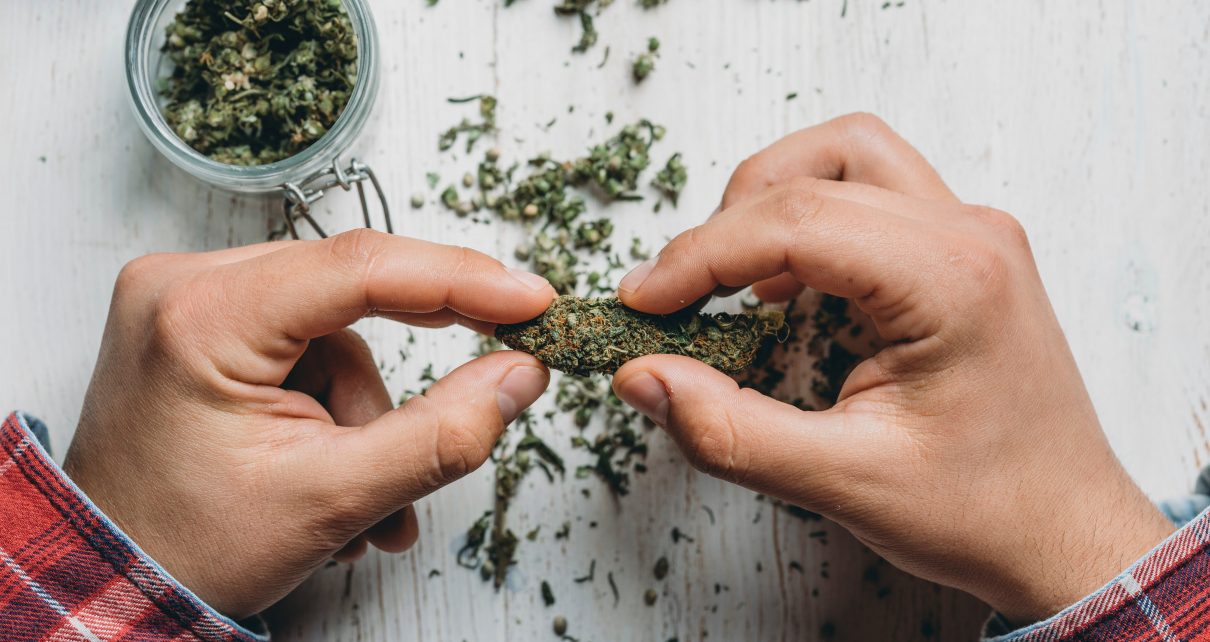Around the world, about 188 million people use marijuana every year. The drug has been legalized for recreational use in 11 U.S. states, and it may eventually become legal at the federal level. In a Gallup survey conducted last summer, 12 percent of American adults reported that they smoked marijuana, including 22 percent of 18- to 29-year-olds. Those are the stats. The consequences remain a mystery.
As access to marijuana increases—and while acceptance of the drug grows and perception of its harmfulness diminishes—it is important to consider the potential for long-term ill effects, especially in users who start young. One of marijuana’s best-documented consequences is short-lived interference with memory. The substance makes it harder to get information into memory and, subsequently, to access it, with larger doses causing progressively more problems. Much less documented, however, is whether the drug has lasting effects on cognitive abilities. Finding the answer to that question is essential. Depending on the severity of any such effects and their persistence, marijuana use could have significant downstream impacts on education, employment, job performance and income.
There are plausible reasons why the teenage brain may be especially vulnerable to the effects of marijuana use. Natural cannabinoids play an essential role in brain cell migration and development from fetal life onward. And adolescence is a crucial age for finalizing brain sculpting and white matter proliferation. The hippocampi, paired structures in the temporal lobe that are crucial in the formation of new memories, are studded with cannabinoid receptors. THC, the main ingredient behind marijuana’s “high,” acts on the brain’s cannabinoid receptors to mimic some of the effects of the body’s endogenous cannabinoids, such as anandamide. The compound’s effects are more persistent and nonphysiological, however. It may be throwing important natural processes out of balance.
A key report on marijuana appeared in 2012. It was issued by a research group that had tracked the development of 1,000 New Zealanders born in the city of Dunedin in the early 1970s. Having assessed measures of cognition and IQ starting at age three, the researchers recorded participants’ use of the drug from their early teen years through their 30s. While those who never used marijuana showed slight IQ increases over time, users experienced steady IQ declines proportional to how long they had smoked and how much. At age 38, users who had started young reported more problems with subjective thinking, and their close friends described them as having attention and memory difficulties. Those who smoked marijuana heavily as adolescents and later quit never fully returned to the baseline. The effect involved all cognitive domains, from remembering lists of words to processing information, solving problems and paying attention. The three dozen people who had used the drug most persistently had an overall decline of around six to eight IQ points. That’s a big deal. So you might think, “Case closed. Smoking dope makes you dopey.” But not so fast.
In a world run by evil scientists, determining the effects of marijuana on IQ would be simple: A randomly determined half of the population would be exposed to the drug during adolescence, and the remainder would be given a placebo. Scientists could compare subjects’ cognitive scores before and after marijuana use, and, presto, you would have your answer. For such answers in the real world, however, we rely on epidemiology, a branch of science that addresses population-level questions ethically. Two important longitudinal strategies for disentangling cause versus consequences are large-scale cohort studies and twin designs. The advantage of the former strategy, as used in the Dunedin study, is that each participant acts as his or her own control. Given that every child starts with a different IQ, it is simple to measure whether Johnny’s or Janie’s scores rise or fall over time in relation to their marijuana use (measured by individual accounts of the quantity, frequency and duration of that use.)
The second strategy proceeds from a different logic. Because twins grow up with the same family backgrounds and are genetically very similar (nearly precisely so in identical twins), they form perfect experimental controls for each other. If Twin A smokes cannabis while Twin B doesn’t, then researchers have a tightly controlled mini experiment that helps rule out confounding factors such as Dad’s job or the alcoholism in Mom’s family. With epidemiological twin studies, a researcher is able to look across an entire sample and summarize all the relevant effects.
Two such researchers are Nicholas Jackson of the University of Southern California and William Iacono of the University of Minnesota, who worked with their colleagues to examine data from two longitudinal studies of adolescent twins in California and Minnesota. The researchers measured the twins’ intelligence between nine and 12 years of age, before any drug use, and did so again between ages 17 and 20. Exactly as in the Dunedin study, marijuana users had lower test scores and showed notable reductions in IQ over time. But in Jackson and Iacono’s analysis, marijuana use and IQ were completely uncorrelated, and IQ measures fell equally in both the users and abstainers. Subsequent twin studies, including one performed with U.K. data by the Dunedin team, corroborated these findings of no relationship between marijuana use and a falling IQ.
How can we explain these discrepancies? First, young marijuana users are many times more likely to also use alcohol and other illicit drugs. And when epidemiologists factor binge drinking, nicotine and other drug use into their models, marijuana’s cognitive effects evaporate. Thus, IQ decline seems more nonspecifically related to general substance use. But this observation doesn’t explain why IQ also falls in nonusing twins of cannabis users. Jackson, Iacono and their colleagues noted that at baseline, prior to any substance involvement, future marijuana users in one of the two cohorts they examined already had significantly lower IQ scores. Put another way, cannabis did not drag down their IQ; it was already low.
Next, investigators uncovered shared underlying vulnerability factors that explained both marijuana use and IQ decreases. For example, behavioral traits such as impulsivity and excessive risk-taking predicted both substance use and lower IQ, as did being raised in a family that did not value education. Delinquent kids received lower grades because of their tendency to skip school and use drugs. So cannabis use was not a culprit in cognitive decline. A welter of inherited and environmental factors seemed to explain both.
How can we decide among apparently convincing yet opposing sets of findings? The early-middle-aged subjects in New Zealand had used cannabis over a much longer time span than had the late-teen twins in Minnesota. Perhaps adolescent cannabis use has no detectable cognitive impact except at very high levels and/or over many years. For now, investigators are eagerly awaiting data from the recently launched Adolescent Brain and Cognitive Development (ABCD) study. ABCD is following 11,000 U.S. 10-year-olds in a national epidemiological sample with serial IQ testing and brain imaging to capture the trajectories of normal brain and IQ development prior to any substance use—and to document any longitudinal consequences of such use. This research has the potential to settle the issue of the relationship of adolescent marijuana use to changes in cognition. Scientists will begin to see meaningful results in the next few years, as these subjects reach their mid-teens.
Last year former Food and Drug Administration commissioner Scott Gottlieb warned about the potential harm embedded in “the great natural experiment we’re conducting in this country by making THC widely available.” His concerns return us to the core issue. Physicians and lawmakers need a more accurate sense of THC’s effects on adolescent minds so that parents, teachers and social planners can respond preemptively to teenage marijuana use. If long-term cognitive effects are shown to be real, this conclusion should result in appropriate plans to restrict use through educational efforts and tough legal sanctions. On the other hand, if cognitive effects are transient or better explained by sociological phenomena, we can all take a step back and direct our efforts and resources elsewhere.



